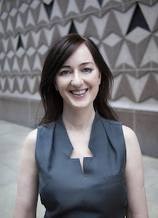5th Bucharest International Biennial for Contemporary Art
Tactics for the here and now
25 May – 22 July 2012
Curator: Anne Barlow
Within the current context of the shifting nature of politics, economics, and culture—conditions that are increasingly referred to as “precarious” times–artists often have to negotiate risky positions, contested territories, or situations in which cultural activity interacts with, or provides a counterpoint to, conditions of flux. Bucharest Biennale 5 profiles the work of artists whose agency lies less in overt statements, but rather in investigative, indirect, or informal strategies that possess their own kind of power.
By nature, work that is investigative is slow in the making, expressing a kind of resistance to both the speed and changing nature of things and the increasing sense of instability that pervades everyday life. The act of researching, uncovering, and presenting things that are below the surface—an activity that has been aided by the Internet, whereby global networks enable artists to seek out obscure or otherwise concealed data—defines the way in which many artists work today. Their work may contain elements of rumor, secrets being revealed through seduction or manipulation, or ideas that are altered through a process of editing. This process can involve a reworking of certain histories, from the civic to the personal, producing a different kind of “knowledge” that is not always about nostalgia or narrative, but is sometimes a deliberately constructed perspective on the contemporary. For BB5, artists’ projects for specific contexts in Bucharest will draw on a variety of sources and sites as a way of re-imagining existing situations or proposing new ones.
Often, artists also circumvent or negotiate existing systems that they find questionable or challenging. Their methodology reflects a practice that is evolving, dynamic and responsive, something that is essential for situations that change quickly or are not yet fully understood. For some artists this means working together, for others, it means developing tactics that are distinctly individual and informal. The deployment of informal approaches is resonant in a city such as Bucharest, among others, where more formal structures do not necessarily appear to support the most experimental art practice.
BB5 will be developed around a number of core commissioned projects that will take place in non-profit or independent spaces, universities, and public venues and sites in the city. Incorporating film screenings and educational programs, BB5 will have a format that involves an ‘exhibition’ at the opening but that also develops dynamically over the duration of the biennale.
The education program will manifest itself in the biennale through programs that encourage both formal and informal types of engagement. From the outset, it is intended that the Biennale becomes a form of agency within the city, such that successive events will arouse the interest of particular audiences. BB5 considers the way in which the Bienniale can be experienced in Bucharest through a series of propositions that act as invitations, statements, proposals, or overtures. To create a more sustained local dimension to the program, these propositions will unfold during the run of the Biennale in various ways, including connectivity to other disciplines, longer-term involvement by artists through specific relationships with educational partner institutions and sites, and elements of surprise and playfulness in addition to critical debates.
The notion of the informal within the education program builds on the existing philosophy of Pavilion’s Free Academy: “What makes the difference between the formal system proposed by the official state power network through the ministry and informal education, proposed by the Free Academy project, is the creation of what appears in the educational discourse as an “active citizen”- that type of citizen that participates in the social debate, that is an agent of change, that proposes the terms of development, that has the attitude, resources and competences to get involved.” (Eugen Radescu)
In terms of the relationship of the visual arts to this, see, among other references: Hal Foster’s article “Precarious: Hal Foster on the art of the decade”, Artforum International Magazine, December 2009; Open 17, A Precarious Existence. Vulnerability in the Public Domain, SKOR | Foundation for Art and Public Domain, Amsterdam, The Netherlands, 2009; Human Condition: Empathy and Emancipation in Precarious Times, Kunsthaus Graz, Universalmuseum Joanneum, Graz, Austria, June-September 2010.
Photo: Anne Barlow. Courtesy Bucharest Biennale


